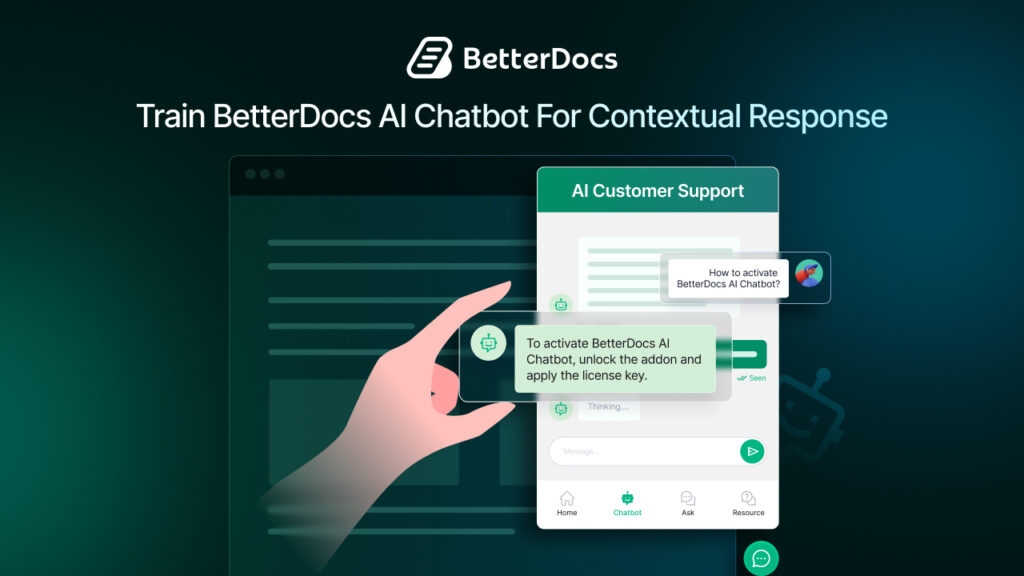People who have not had formal training frequently have numerous useful ideas in every organization and at every level. This is referred to as tribal knowledge, which remains hidden in the memory and experiences of employees and you do not want them published either. In the long run, these can enhance company processes and operations. However, if it is not properly recorded or shared, it can pose some threats.
![Tribal Knowledge: Everything You Need to Know [With Example] 1 Tribal Knowledge](https://betterdocs.co/wp-content/uploads/2024/09/image.jpeg)
As your businesses expand, it is crucial to record this sort of information, which is why solutions like BetterDocs come in handy. In this blog, we will look into tribal knowledge, its qualities, and how to manage it perfectly using BetterDocs’ internal documentation feature.
💡 Tribal Knowledge: the Know-How
Tribal knowledge, also known as institutional knowledge, tacit knowledge, or legacy knowledge, is defined as the collaborative know-how, practices, ideas, and informal procedures carried along within an organization but not documented. This form of knowledge is usually spread by word of mouth or personal contacts, particularly between older employees and new team members.
Here are some key attributes:
👉 Unwritten & Informal: Tribal knowledge is not part of formal training or documentation. It is shared in casual conversations, meetings, or mentoring sessions, making it highly informal.
👉 Exclusive to Long-Term Employees: Typically, this knowledge is held by employees who have been with the company for an extended period. They have collaborative experience across multiple teams that new employees might not have.
👉 Inconsistent & Risk-Prone: Since it is not standardized, this kind of knowledge may vary from one person to another. As a result, it can lead to inconsistencies in how tasks are performed. It poses a significant risk when key employees leave the organization, taking their knowledge with them.
👉 Difficult for New Employees: Onboarding new team members and collaborating flexibly becomes challenging when vital information is stored only in the minds of senior members in an organization. New hires often have to rely heavily on their more experienced colleagues to learn the ropes.
📝 Introducing BetterDocs Internal Documentation: Easily Manage & Share Tribal Knowledge
![Tribal Knowledge: Everything You Need to Know [With Example] 2 Tribal Knowledge](https://betterdocs.co/wp-content/uploads/2024/09/image.png)
One of the major challenges that businesses face is the loss of institutional knowledge as senior members leave. Companies that do not have a functional system to record or organize this tacit knowledge could face operational delays, training inefficiencies, and costly knowledge gaps. This is where BetterDocs’ internal documentation comes into play.
📌 What Is BetterDocs Internal Documentation?
BetterDocs is a comprehensive knowledge base solution for WordPress, and its ‘Internal Documentation' feature enables organizations to build private, restricted-access content. This solution lets your team save critical internal procedures, manuals, and legacy knowledge in a single, searchable, secure area.
🌟 Private Documentation: BetterDocs allows you to create knowledge bases that are only available to authorized users, such as internal teams or individual workers. This guarantees that sensitive information is kept confidential.
🌟 Customizable User Roles: The internal documentation feature allows you to assign certain roles and permissions, limiting access to those who need it. Whether it is internal processes, team-specific standards, or other sensitive information, BetterDocs makes sure the appropriate people have access to the correct documents.
🌟 Easy Collaboration: Teams can communicate and contribute to the knowledge base, allowing for ongoing updates and improvement of internal information. This guarantees that institutional knowledge is recorded and updated.
🌟 Searchable & Accessible: With BetterDocs, your internal knowledge base is organized and easily searchable. This lets your members quickly find the information they want without relying on verbal communication. This promotes productivity and keeps everyone on the same page.
For a detailed guide on how to create and manage an internal documentation system using BetterDocs, you can follow this guide.
🔗 Institutional Knowledge & BetterDocs Internal Knowledge Base: the Collaboration
![Tribal Knowledge: Everything You Need to Know [With Example] 3 Tribal Knowledge](https://betterdocs.co/wp-content/uploads/2024/09/image-1.png)
The connection between tacit knowledge and BetterDocs’ internal knowledge base feature is clear. BetterDocs provides the structured platform needed to capture, formalize, and share legacy knowledge. This is how BetterDocs ensures that your internal knowledge does not remain hidden or risk being lost. Here is how BetterDocs helps businesses manage tribal knowledge effectively:
📌 Capturing Informal Knowledge
Tacit knowledge typically is not documented, making it hard to access or maintain over time. With BetterDocs’ internal knowledge base, companies can capture this knowledge, give it a written format, and ensure it is preserved. Whether it is a unique workflow, a troubleshooting trick, or an undocumented process, BetterDocs allows teams to formalize it in written form.
📌 Creating a Central Repository
BetterDocs creates a single knowledge archive for all internal documents, eliminating dependency on verbal conversations and guaranteeing that everyone has access to the same information. This single archive serves as a go-to resource for both new hires and experienced employees, assisting in the uniformity of processes throughout the organization.
📌 Reducing the Risk of Knowledge Loss
Without internal documentation, legacy pieces of knowledge can easily be lost when key employees leave the organization. BetterDocs mitigates this risk by creating a permanent record of valuable information that can be easily passed on to new employees. This ensures business continuity even in times of employee turnover.
📌 Improving Onboarding & Training
BetterDocs facilitates new employee onboarding by recording institutional knowledge in an organized fashion. Internal documentation compiles all relevant information in one location, allowing new team members to self-train on key practices without relying on more experienced colleagues.
📌 Securing Sensitive Information
Not all knowledge should be accessible to everyone in the organization. BetterDocs enables you to restrict access to vital information, ensuring that only authorized employees can view specific documents. This is especially critical for unique procedures and sensitive operational information.
🧑💻 Example: How an Organization Can Record Tribal Knowledge with BetterDocs
Consider the case of a software development business. Senior engineers have learned a variety of code shortcuts, debugging techniques, and product-specific knowledge throughout the years. This skill and knowledge, while valuable, remains undocumented and only shared informally with newer developers.
When a senior developer leaves the company, this information risks being lost. However, by using BetterDocs’ Internal Documentation feature, the company can document these coding tricks, internal processes, and troubleshooting methods. Not only is this knowledge preserved for future developers, but it also allows the company to improve efficiency by reducing onboarding time and ensuring a smooth transfer of knowledge.
🧑💻 Utilize BetterDocs & Manage Tribal Knowledge Today!
Internal knowledge is an essential component of any organization, but it poses problems if not properly collected and shared. BetterDocs’ internal documentation feature allows you to record and maintain this information, ensuring that your company stays efficient, scalable, and free of knowledge loss. Do not lose your legacy knowledge anymore. Start recording it using BetterDocs today.
If you have found this blog helpful, share your opinion with our Facebook community. Puoi subscribe to our blogs for valuable tutorials, guides, knowledge, tips, and the latest WordPress updates.


![5+ Knowledge Base Challenges You Should Look Out for in 2026 [With Solutions]](https://betterdocs.co/wp-content/uploads/2025/12/1280x720-_-Blog-Banner-_-Knowledge-Base-Challenges-1-1024x576.jpg)



